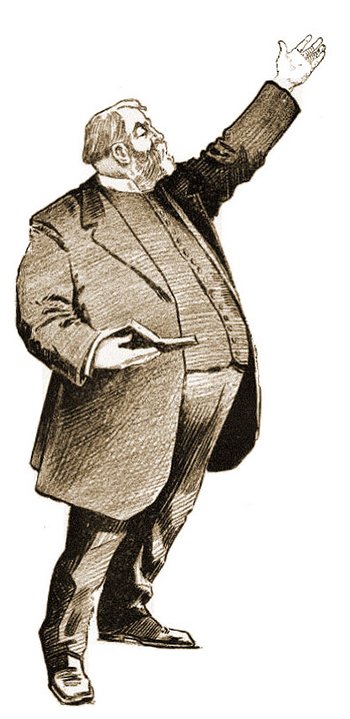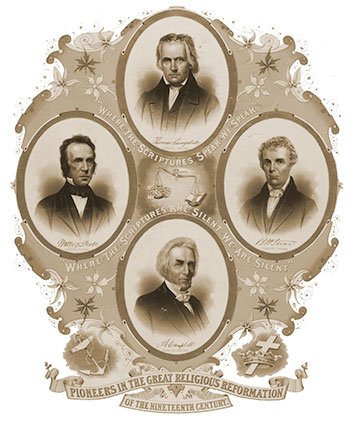20th Century Revival Heroes

Reinhard Bonnke
Twentieth Century: The Century of the Spirit
This century has been correctly called the Century of the Holy Spirit by Vinson Synan and other historians, because it witnessed more outpourings of the Holy Spirit, more authentic revivals and an unprecedented of numbers of new converts and new churches across the entire world, than any other century before it! By the beginning of the 21st century there were more Christians living on earth than had lived during the preceding twenty centuries! Such was the exponential growth of the church during this amazing century.
The century began with a widespread hunger for more of God throughout the Christianised world. There was passion and prayer for revival. Tens of thousands were seeking a level of holiness that few had previously attained. The Holy Spirit was put back on the church’s agenda and was seen as the author of personal victory and evangelistic effectiveness.
The first wave of 20th century revivals began with the early Pentecostals in America and pockets of evangelical revival in South Africa, amongst Boer prisoners of war and others places as far apart as Bermuda, Ceylon, India, the Far East, Africa, and Latin America.
The well-known 1904 Welsh revival ignited what was the last and greatest world-wide revival. It’s effects reached global proportions.
The Welsh Revival also fuelled the Pentecostal movement, beginning with Azusa Street in 1906, then spreading across the world. Pentecostalism eventually became one of the most powerful and numerically significant Christian movements of the twentieth century.
By the mid-twentieth century the Pentecostal wave had all but stagnated but was re-vitalised by a fresh wave of Evangelical, Healing and ‘Latter Rain’ revivals from 1947 on.
The late 1960’s and early 70’s the Charismatic Movement was sent from heaven resulting in denominational renewal and untold numbers of neo-Pentecostal churches which absorbed many of the lessons and practices of the Healing and Latter Rain movements.
Another wave of the Spirit crashed upon the shores of the world as a result of the charismatic and evangelical revivals of the 60’s and 70’s, delivering Third Wave and Apostolic Movements.
The entire century saw a multifacetted kaleidascope of Holy Spirit activity which advanced God’s Kingdom to every corner of the globe!
The Pew Research Centre reports, ‘A century ago, the Global North (commonly defined as North America, Europe, Australia, Japan and New Zealand) contained more than four times as many Christians as the Global South (the rest of the world). Today, the Pew Forum study finds, more than 1.3 billion Christians live in the Global South (61%), compared with about 860 million in the Global North (39%).’
‘And five of the top 10 countries with the largest Christian populations are either in Africa (Nigeria, Democratic Republic of the Congo and Ethiopia) or Asia (Philippines and China). Moreover, the fastest growth in the number of Christians over the past century has been in sub-Saharan Africa (a roughly 60-fold increase, from fewer than 9 million in 1910 to more than 516 million in 2010) and in the Asia-Pacific region (a roughly 10-fold increase, from about 28 million in 1910 to more than 285 million in 2010).’
We have divided this section of short biographies, into 6 different sections, in the boxes below, for ease of navigation.
On the left of this page you will find a full list of the
1st – 20th Century Revival Heroes
that we currently have articles about.
Evangelicals
There were evangelical revivals throughout this century. Gypsy Smith, Torrey and Alexander and Seth Joshua were experiencing a quickening of the Spirit before the Welsh Revival arrived in 1904. Evan Roberts was the most well-known revivalist, but there were others. The Welsh Revival spread like wildfire across the world like a spiritual tidal wave releasing many revivalists in its wake. Jonathan Goforth in Manchuria, R. D. Mackay in Korea, Amy Carmichael in South India and many others, surfed on this wave of the Spirit.
Throughout the century others carried the revival baton: 1921 saw the East Anglia Revival with Douglas Brown and Jock Troup in Scotland, Billy Graham emerged in the late ’40’s and Duncan Campbell was instrumental in Hebrides Islands in 1949.
Other revivals include the Indonesian Revival in 1965, the Jesus Movement in the late 60’s and 70’s, revival in the Solomon Islands in 1970, the Asbury Revival in 1970, the Canadian Revival in 1971, the Cambodian Revival in 1973 – and a few others to the end of the century!
Pentecostals
The rise of the Pentecostal Movement has become a phenomenon of our times. Beginning in 1901 the Pentecostal/Charismatic church numbered in excess of 550 million adherents by the end of the century!
The movement began in January, 1900 through Charles Parham, who saw further outpourings of the Spirit’s power at Kansas in 1903 and Houston in early 1905. In June, the fire leapt to Pandita Ramabai in India who oversaw a Pentecostal outpouring there.
The Azusa Street outpouring, occurred in 1906 at Los Angeles with William Seymour and in October T. B. Barratt experienced a personal Pentecost in an hotel room in New York. Barratt’s ministry took the fire to Europe, notably to Alexander Boddy’s Sunderland meeting in 1907. Subsequently, Smith Wigglesworth and other British Pentecostal pioneers received an empowering of the Spirit.
Today, the Pentecostal/Charismatic is the fastest growing Christian movement in the world.
Healing Movement
This great revival was the most powerful and fruitful move of God in Christian history. Participants defined it as “a signs-gifts- healing, salvation-deliverance, Holy Ghost miracle revival.” A more recent historian says it was “the most extensive public display of miraculous power in modern history.”
There were scores of men and women across the globe that God used to spark this amazing revival. William Branham and Oral Roberts were the most prominent pioneers, but other notables included A.A. Allen, Jack Coe, William Freeman, T. L. Osborn, W. V. Grant, Paul Cain and a host of others.
Latter Rain Movement
This movement was an important but less-known element of the post-World War II evangelical and healing revivals. Its significance is found in the foundation it laid in independent charismatic churches of the 1960s and 1970s and the new ‘apostolic churches’ of the 1980’s through to the turn of the 21st century.
Its theology and practces put the ministry of the Spirit at the centre of local church life which provided the impetus for a new wave of church planting and the restoration of New Testament-based churches across the world.
Charismatic Movement
The genesis of this movement is generally connected to Dennis Bennett, an Episcopalian pastor at St. Marks, Van Nuys, California. The news went public and over the next few years almost every Christian denomination was impacted, until charismatics could be found in Presbyterian, Baptist, Baptist, Lutheran, Mennonites Methodist, denominational churches across the globe.
However, a much larger charismatic movement preceded and succeeded this denominational movement. The were those who were equally committed to the restoration of charismata to the church but who also recognised the need for a restoration to the primitive pattern of the early church. Tens of thousands of non-denominational, biblically-aligned churches were planted, new ministries emerged and apostolic movements or ‘streams’ were born. Evangelism was put at the top of their agendas and aggressively pursued. Multitudes were converted, filled with the Holy Spirit and became active in Christ’s mission.
In the final decades of the century, the Cell Church Movement, the Third Wave Movement and various Apostolic Movements were led to plant new Spirit-filled churches across the world across the world. The charismatic churches, alongside the Pentecostals are the fastest growing branch of God’s church today.
Third Wave and Apostolic Movements
The New Apostolic Reformation is a description, originally coined by C. Peter Wagner, to describe a rapidly growing movement within Pentecostal and charismatic churches around the world. The title describes an observable phenomenon, rather than an organised movement with a formal membership. There is therefore, a wide range of variance on specific beliefs and practices, thus making generalisations difficult, if not impossible.
In the 1980s Wagner observed the emergence of a new type of church on every continent, which was non-denominational, charismatic and experiencing explosive growth. He began researching these churches, looking for common beliefs and practices which were the cause of such phenomenal success.
He found that these churches adopted all the beliefs and practices of Third Wave charismatics – relaxed style, contemporary worship, use of spiritual gifts, expectance of God’s presence, supernatural power and an emphasis on evangelism. In addition to these new ecclesiastiacsl norms, Wagner discovered a completely different approach to leadership structure and development: the reinstatement of the church offices of functional ‘apostles’ and ‘prophets’ to complement the existing offices of pastors, teachers, and evangelists. In contrast with denominational leaders these ministries were recognised by their anointing rather than their education and their training was done in Christian service, not in Christian seminaries



